Bushcraft without frustration: These 12 mistakes you should avoid as a beginner
You are starting with bushcraft and want to avoid typical beginner mistakes? Here you will learn what pitfalls there are and how to avoid them.
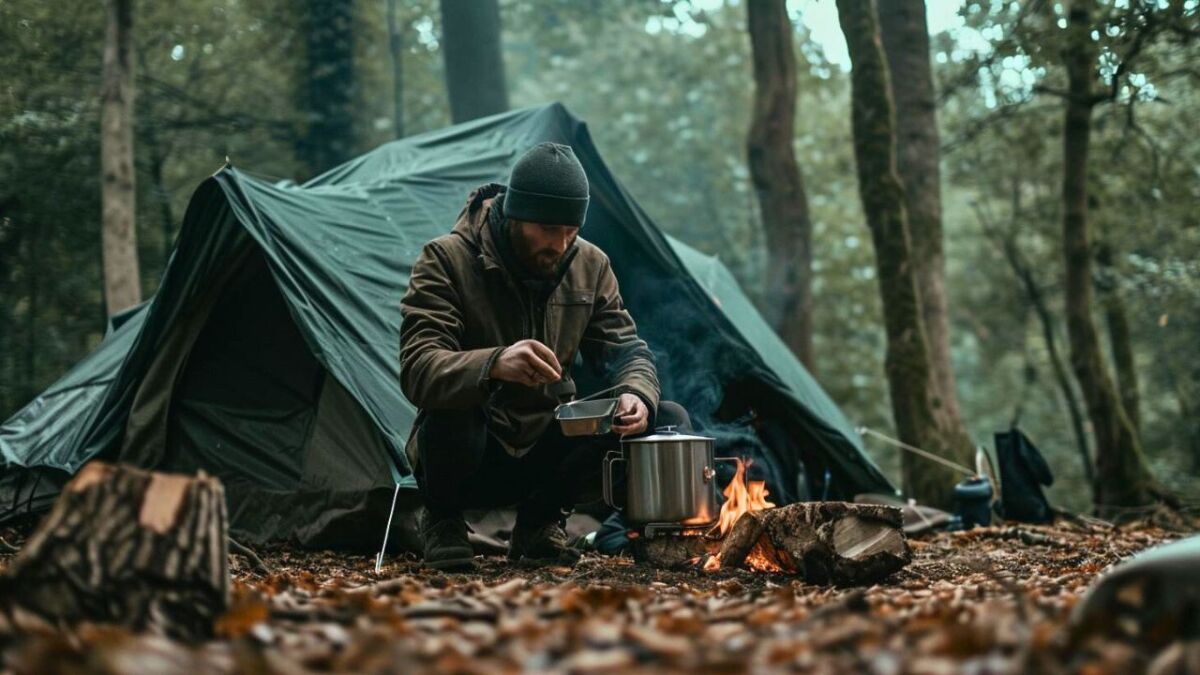

From Martin Gebhardt. Check out my “About me” page.
👉 The key facts from this guide
- Thoroughly prepare yourself, know the destination, weather, and local conditions.
- Choose equipment wisely - quality over quantity.
- Know your limits and gradually expand your skills.
- Inform others about your plans and have safety equipment ready.
- Safely ignite and monitor fires; learn the art of making fires.
- Recognize edible plants and animals; refrain if unsure.
- Purifying water is crucial, use appropriate methods.
- Be prepared for weather changes and pay attention to natural signs.
- Have basic first aid knowledge and practice regularly.
- Wear functional clothing, adapted to changing weather conditions.
- Master the use of maps and compass for orientation.
- Practice Leave-No-Trace principles to protect nature.
Imagine you're walking through the forest, leaves rustling under your feet, the campfire crackling.
Sounds idyllic, but if your outdoor adventure becomes a challenge because you neglected bushcraft basics, the romance quickly comes to an end.
Even professionals fall into typical traps:
- too little preparation
- wrong tool
- overestimation of oneself
And instead of adventures, you experience an unwanted survival training.
Together, we change it!
I will show you how to prepare yourself optimally, choose the right equipment, and use the forces of nature for your benefit with respect and knowledge.
Make your trip into the green a success.
Mistake No. 1: Lack of preparation and planning
Before you lace up your boots and shoulder your backpack, let's discuss the ABCs – the preparation.
Because believe me, knowledge of the target area, the weather, and the local conditions is the key to a successful bushcraft trip.
I have learned that a lack of preparation opens the door to unexpected and often unpleasant surprises.
Know your terrain
If you enter "Unprepared" into the map of the wilderness, the compass points straight towards bad luck.
Before you set off, you should take the time to study your destination carefully.
Are dense forests, steep mountains, or open waters awaiting you? (Google Maps is your friend here)
Every terrain has its pitfalls. Get information about flora and fauna, rules of conduct, and protected areas.
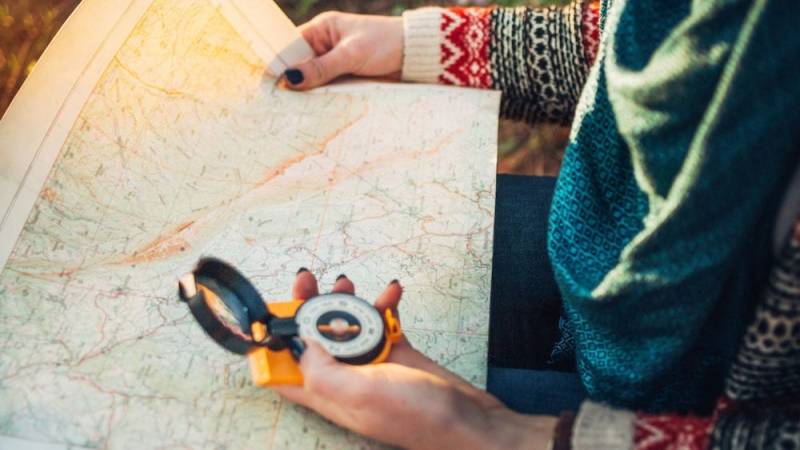
The Weather in Focus
From nothing comes nothing - and sometimes too much from weather forecasts. Nevertheless, without them, you are like a ship without a captain on a stormy sea.
Check the weather conditions regularly. Nothing can disrupt your bushcraft plans as quickly as an unexpected storm, toppled trees, or a heatwave.
I have looked up these links for you from my dictionary to point you in the right direction: What is weather forecast and weather in the context of survival and bushcraft?
Read also
Weather forecast with animals, plants or clouds - assessing the weather through observation of nature – Learn to read the weather through nature. Recognize changes in the weather by observing animals, plants, clouds, and wind.
A Quote to Take Away
Preparation is the foundation on which your bushcraft experience is built. Without the foundation, everything else is just standing straw.
Internalize this quote because it is the core of what I want to convey to you.
With a solid foundation of knowledge and preparation, you will overcome challenges and make the most out of your adventure.
So I will guide you through this manual, and together we will make sure that you are well-prepared for your bushcraft expedition.
Mistake No. 2: Insufficient Equipment
Never forget: In nature, your equipment is more than just a pile of items in your backpack - it is your lifesaver, your comfort, and your tool to make the most out of your bushcraft experience.
I have learned that choosing the right equipment is not a side issue, but an art in itself.
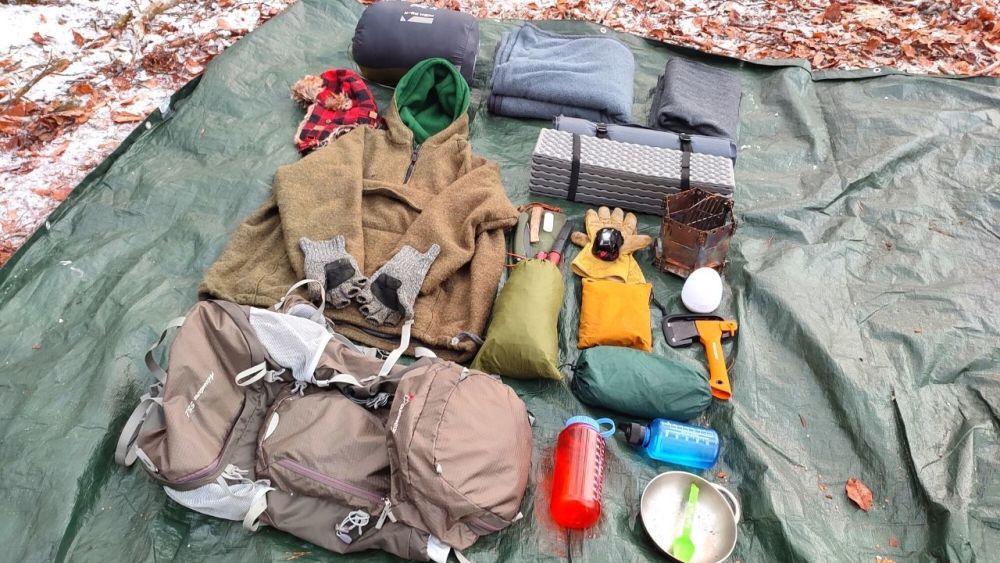
Quality over Quantity
I often see people using cheap knives that pose more risk than benefit, or backpacks that fall apart when exposed to strong winds.
What you need are reliable companions: The knife that can handle even the toughest branch, the waterproof clothing that keeps you dry even in a surprise storm, and the sleeping bag that keeps you warm even on frosty nights.
Here are some essential equipment tips that won't let you down:
- Knife: Look for a fixed and stable blade as well as a good handle. (my top bushcraft knives)
- Firestarter: A lighter and a Firesteel are essential.
- Water purification: A filter or tablets should not be missing.
- Shelter: Tarp or tent? The main thing is water-repellent and robust.
And believe me, the list is long. Take a look here to expand your equipment horizon:
- What belongs in a perfect survival equipment?
- What does a beginner's bushcraft equipment look like?
- My essential wilderness equipment
This sentence stuck with me when I was once stuck in an alpine storm:
Choose your equipment as if your life depends on it - because it does.
You would rather not find out that your equipment is inadequate when you're already stuck between rocks and snow.
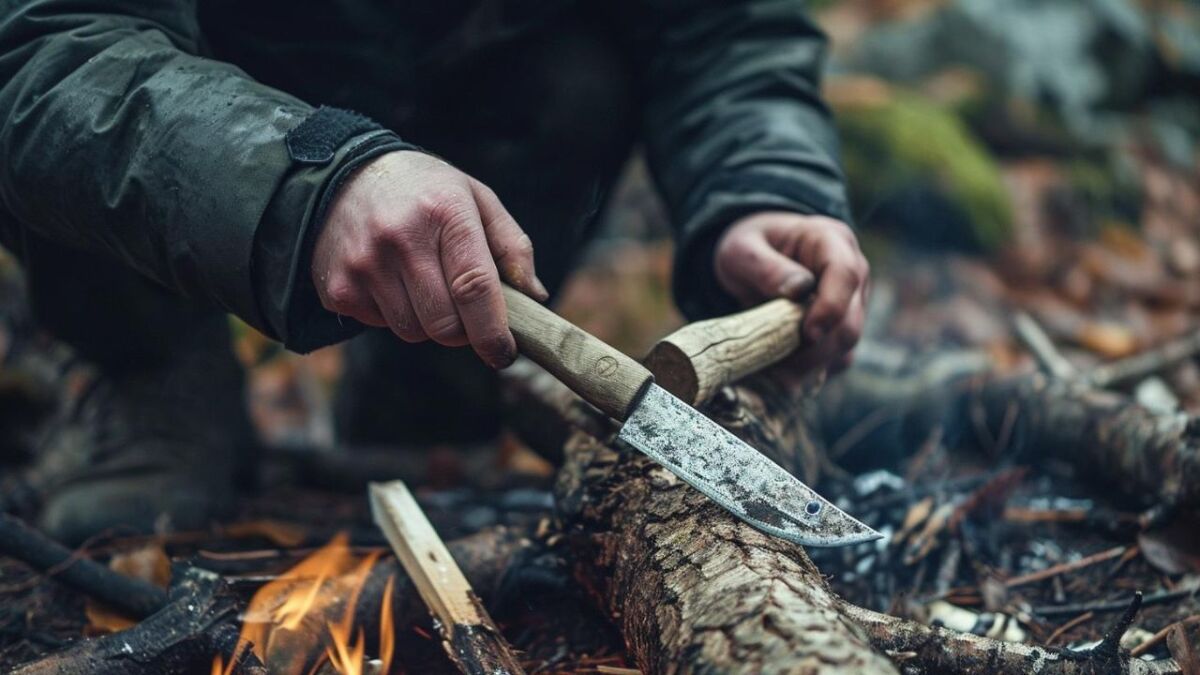
Pack wisely, choose wisely - and don't forget to test everything before departure.
Because the most beautiful thing about bushcraft is enjoying nature - with equipment that you can not only carry, but also trust.
Mistake No. 3: Overestimation of One's Own Abilities
I remember the time when I thought I could cross a river without any problems because I had read about it in books.
What a mistake!
The current was stronger than expected, and before I knew it, I was clinging to a rock. That was a lesson in humility.
Knowledge is good, skill is better
It's great that you are enthusiastic about bushcraft and expanding your knowledge.
But knowledge alone does not make a master.
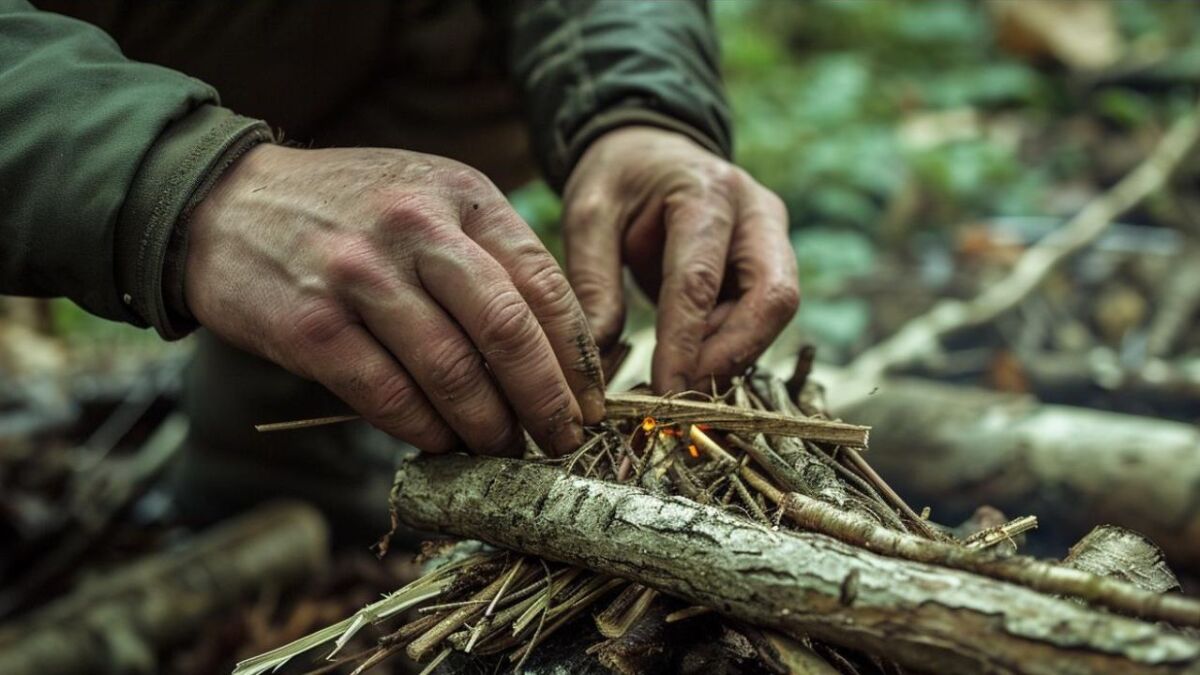
The true art lies in knowing one's own limits and gradually daring to take on new challenges (as we do in the Wildimpuls program).
- Fire making: Yes, you've already watched dozens of videos about it, but have you tried it yourself in wet conditions?
- Orientation: Reading maps and using a compass is not something you only learn at your desk at home.
- First aid: Taking a first aid course is good, but regular practice makes your reaction in emergencies more secure.
Here is a statement that fits perfectly:
Overconfident, the wanderer becomes a lost person.
I go out with the attitude. It keeps me from taking risks when I think I have everything under control. The fact is: There is always something new to learn.
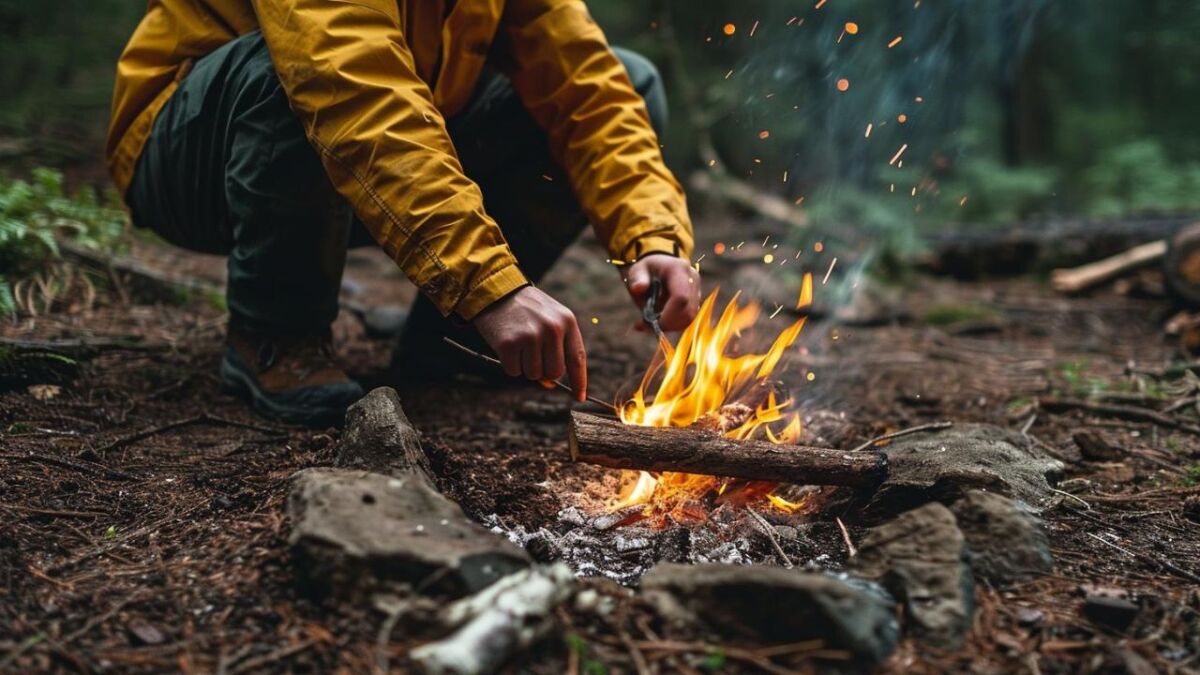
Step by Step to Expert
Start small.
- Practice the basics like making fire in the garden before you are in the wilderness.
- Orient yourself on familiar paths with map and compass before venturing into unknown terrain.
- And regularly attend first aid courses, not only as a refresher, but to instinctively act correctly when it matters.
Take the time to familiarize yourself with your skills - it often takes years.
This not only gives you security, but also the certainty that you can rely on yourself.
Because in the wilderness, you are the best helper you can have - provided you really know what you're doing.
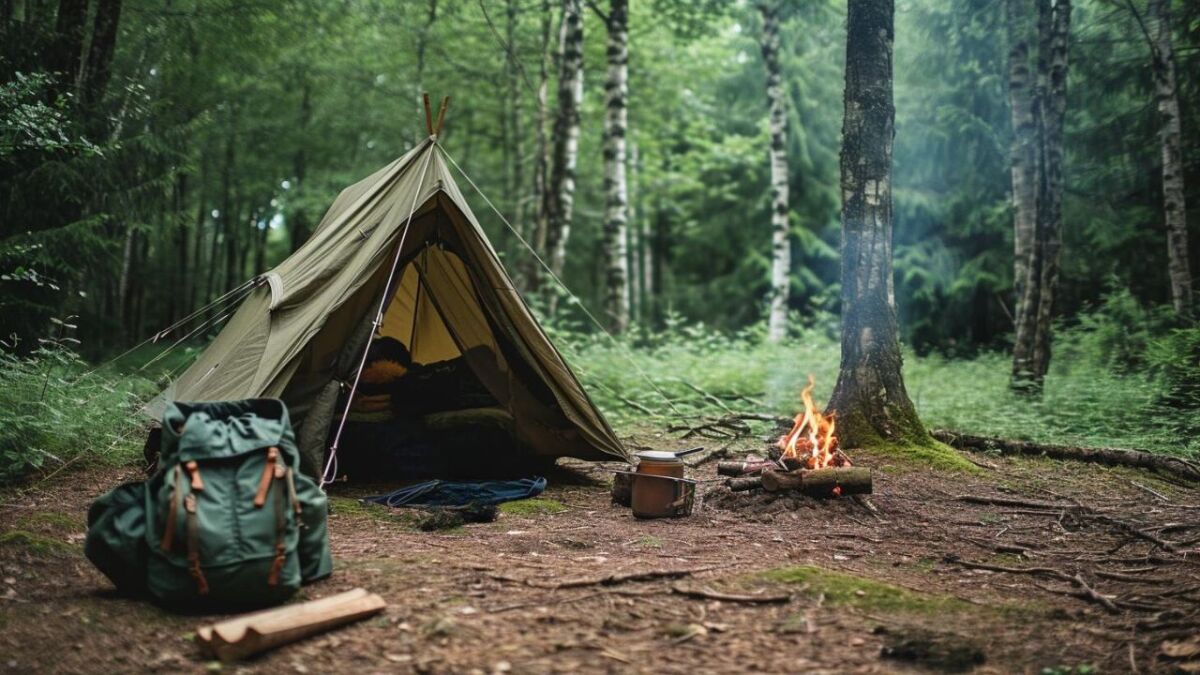
Mistake No. 4: Ignoring security precautions
I have internalized a rule during my years in nature: Safety is non-negotiable.
No matter how experienced you are, the moment you consider security measures unnecessary is the moment when risk whispers your name.
Inform others about your plans
It's more than just good advice, it's a rule of survival: Always tell someone where you're going and when you'll be back.
Believe me, there is no greater feeling of relief than knowing that someone knows your route and can organize help if needed.
- Emergency contact: Always have a contact ready who can get help for you in case of an emergency.
- Share your route: Even if your tour is only short - let someone know where you will be.
- Check-in: A designated time to check in gives you and your loved ones peace of mind.
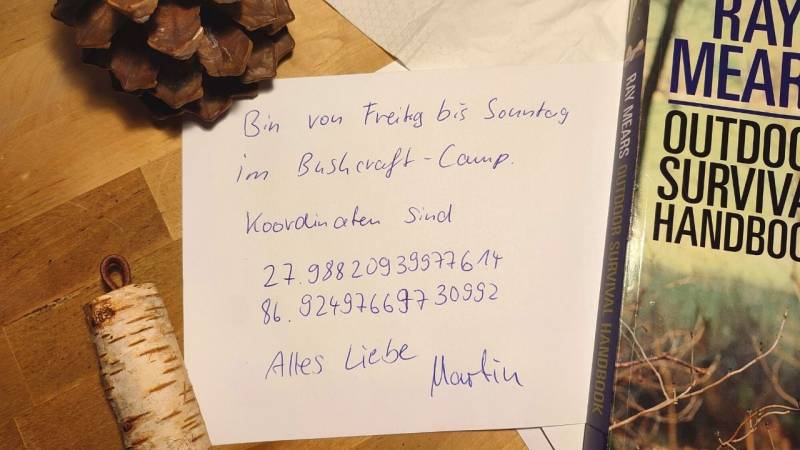
This is not a quote from an adventure novel, this is reality:
A map of your route in the hands of a friend is as valuable as your sharpest knife.
Because if you disappear into the wilderness without saying where and why, even the best knife won't be able to save you if something goes wrong.
Your safety equipment
In addition to the classic emergency kit with first aid equipment, you should also not neglect modern technology:
- Whistle: Small but loud - your whistle can save lives in an emergency.
- PLB (Personal Locator Beacon): In remote areas, this signaling device is your direct line to rescue.
- Mobile phone: It should always be charged and, if possible, stored in a waterproof bag.
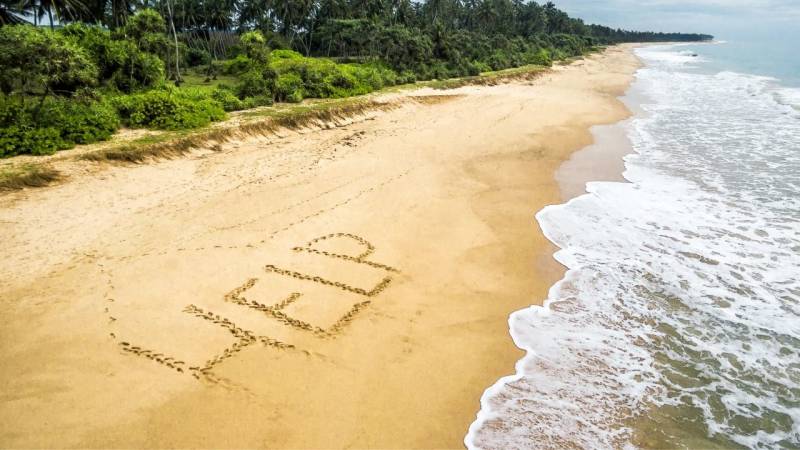
Take these recommendations seriously. Do not take your safety lightly. Because nature is magnificent, powerful - and it does not forgive recklessness.
Read also
3 primitive signals to attract attention in an emergency - With signals, you attract attention in an emergency. Learn the three most important signals that you can create without modern tools.
Mistake No. 5: Not mastering fire making
Fire has always exerted a magical attraction on us humans. It warms, it protects, and it cooks our food.
But it also demands respect.
I have had to experience firsthand that making fire is no child's play, but a real skill that requires practice and skill.
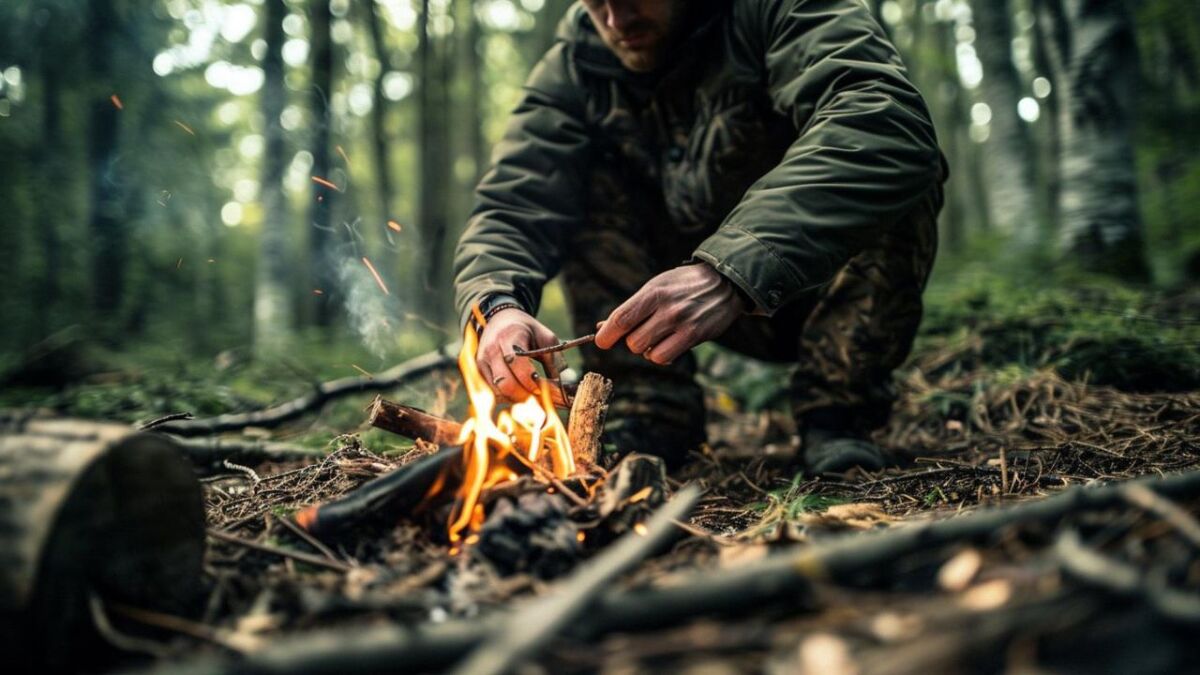
The Art of Making Fire
It's more than just rubbing two pieces of wood together - it's a ceremony with a millennia-old tradition.
Here are a few proven steps to help you ignite and use the fire safely:
- Choose a suitable location: Sheltered from the wind and away from flammable materials.
- Prepare the ground: Earth or stones can help prevent the flames from spreading.
- Collect materials: Dry wood, fire starters, and tinder should be ready before you start the fire.
- Light it properly: Use fire starters and consider the direction of the wind.
- Always supervise: A fire is not self-sustaining. It requires your constant attention.
This old saying reflects the wisdom I have acquired to handle fire safely and responsibly.
Fire is a good servant, but a bad master.
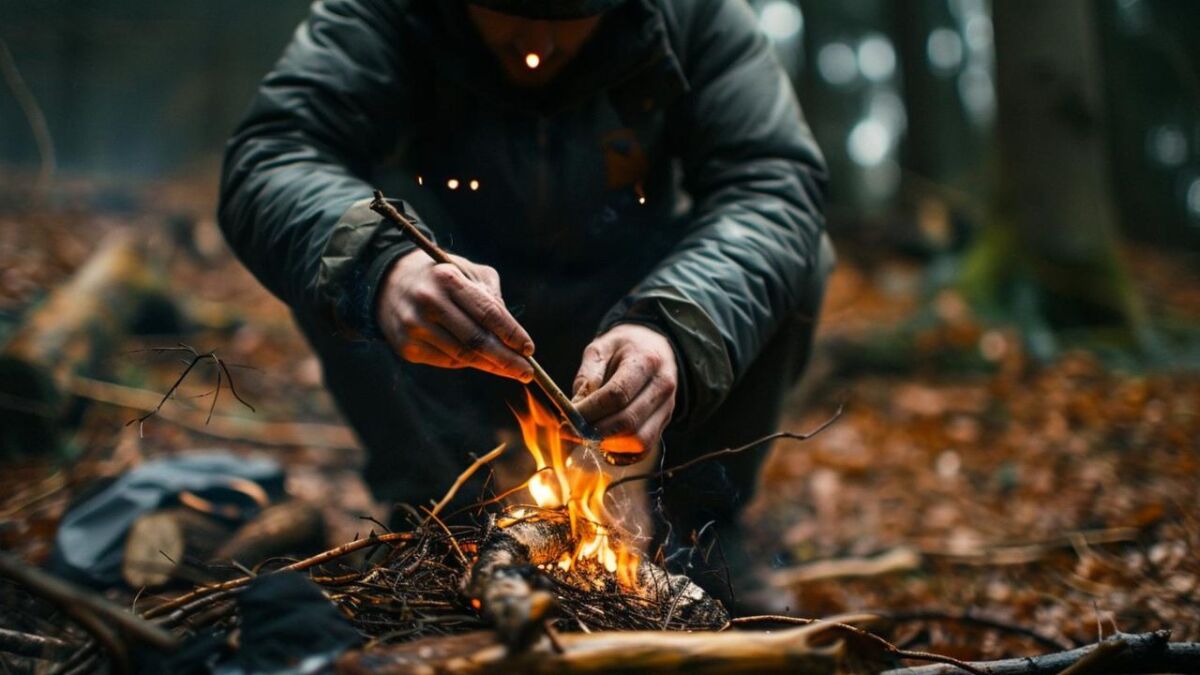
Tips for Fire Safety
A fire can quickly get out of control, so you should always keep the following in mind:
- Extinguish: Always have something to extinguish - water, sand, or a shovel.
- Keep distance: Build your camp so that sparks are not a danger.
- Intervention options: Have branches or sticks ready to control and rearrange the fire.
Building a fire requires practice and a deep understanding of the element. Take a look at these helpful links:
If you master these practices, fire will become your loyal ally in the wilderness, providing you not only with warmth and light, but also a sense of home in the midst of a great adventure.
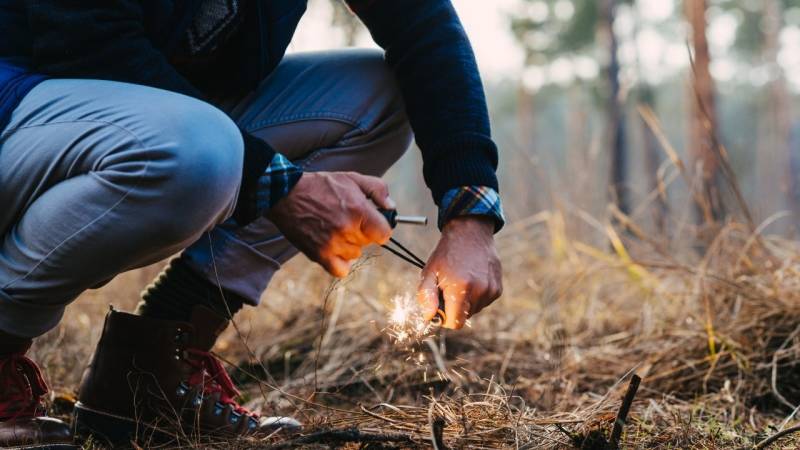
Mistake No. 6: Insufficient knowledge about edible plants and animals
Nature is a lush garden, but not everything that is green and crawling belongs on the plate.
I have already tasted plants whose bitter aftertaste has haunted me for days - and that was the least of my worries.
Collecting food in the wilderness is a high-stakes game when your knowledge has gaps.
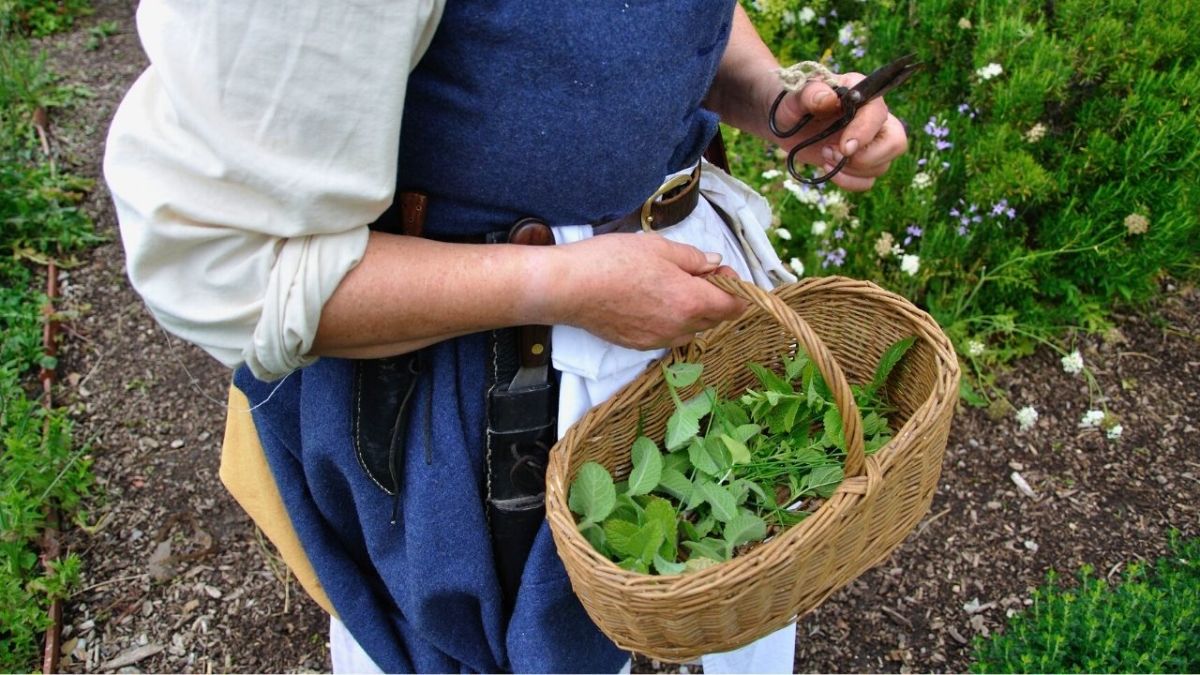
Survival is not a walk in the park
Always remember that even seemingly harmless berries or mushrooms can be dangerous.
Fact is: Before you collect something, you need to make sure you know WHAT it is.
And if there are doubts - let it be. "In dubio pro reo" does not apply here - in doubt, it can make you sick or worse.
Learn before you eat
The nature offers a wealth of nutritious and tasty plants and animals, but it is crucial to recognize them:
- Detailed Guides: Use field guides with clear pictures and descriptions.
- Local Knowledge: Learn about the regional flora and fauna.
- Courses and Workshops: Wilderness schools and bushcraft courses can provide you with practical skills.
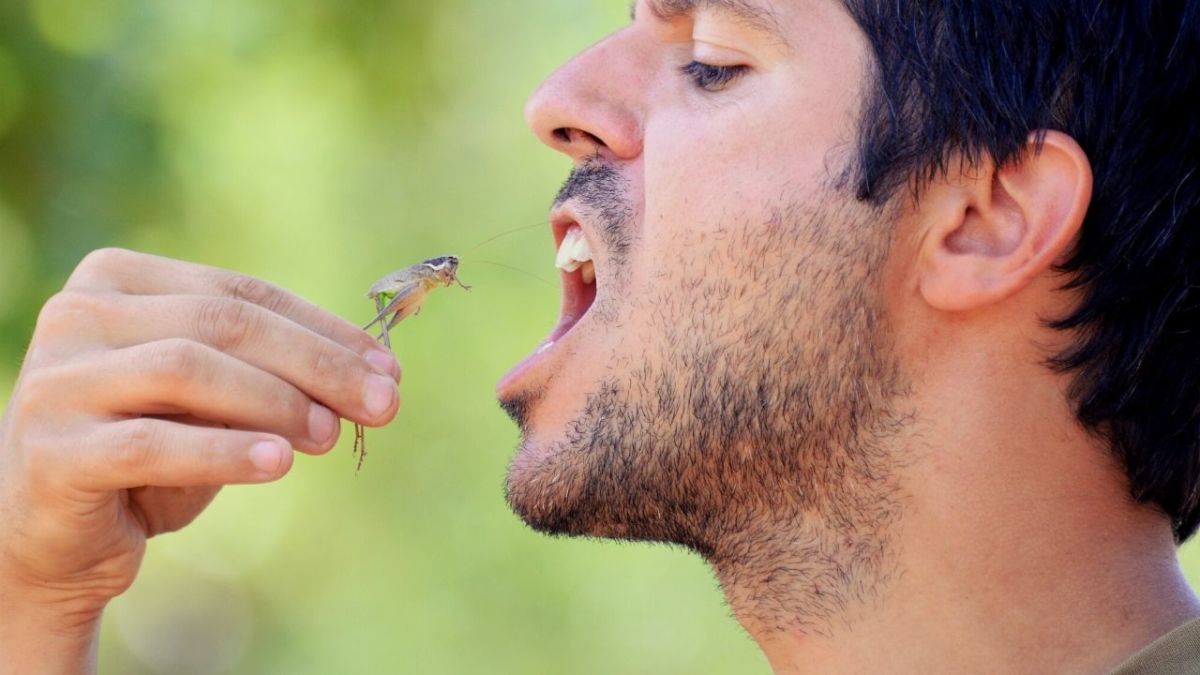
Some golden rules
- Avoid unknown plants: Stay away from the unknown - and watch out for poisonous look-alikes.
- Consider the seasons: Edible species vary depending on the season and may look different (e.g., no flowers).
- Be cautious with animals: Insects can also pose a danger.
Nature is both the greatest doctor and the most poisonous pharmacist.
This realization constantly compels me to treat nature respectfully and responsibly, especially when it comes to the topic of food.
For more safety in collecting and hunting, check out these resources:
- Emergency food in the forest - My big list of edible plants, fruits, nuts, roots
- Survival: 7 ways to find food in the wild
With the right knowledge, nature can be your pantry. But take the time to acquire and solidify this knowledge - your life could depend on it.
Mistake No. 7: Poor water treatment
Think about your last feeling of thirst.
Now imagine yourself in nature, surrounded by water that you cannot drink.
Terrible, isn't it?
I once drank water from an apparently clean stream and was promptly proven wrong.
Since then, water purification has become an essential part of my bushcraft practice.
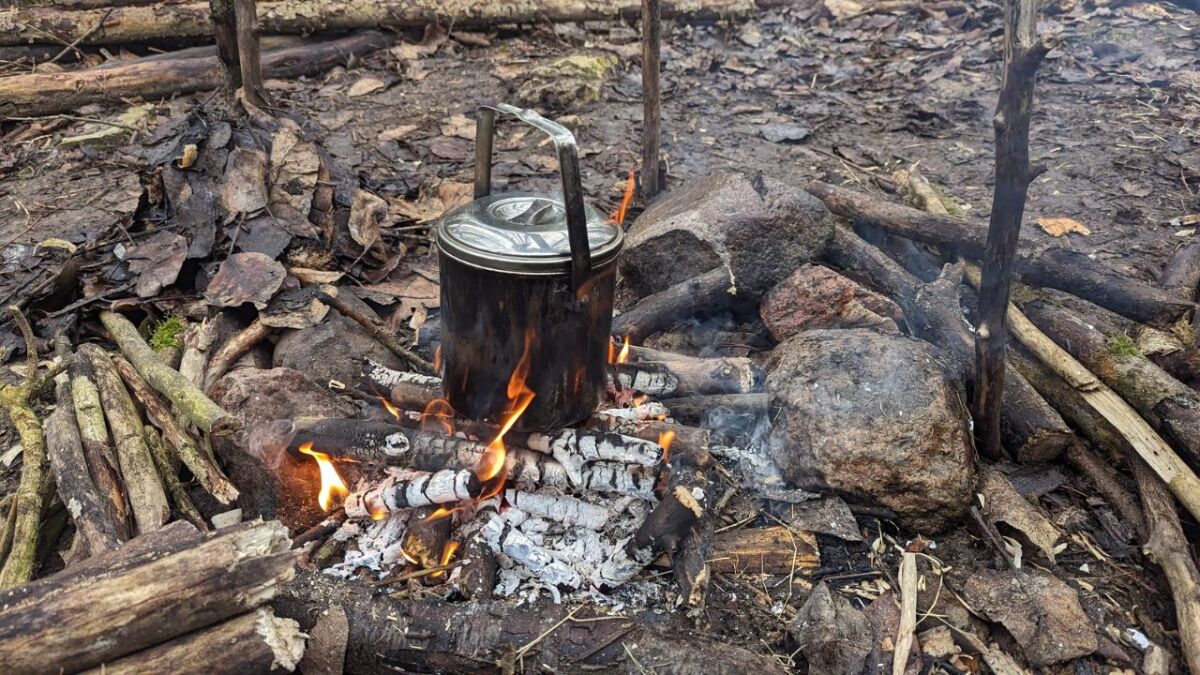
Clean water is non-negotiable
Life in the wilderness teaches you one thing: water is life, but contaminated water can be deadly.
If you are on the search for drinking water, be aware of two things: No water source is safe without further precautions, and a clear-looking river can be deceptive.
- Visual inspection: Clarity is not proof of cleanliness.
- Smell check: If the water smells unpleasant, caution is advised.
- Taste test: Even if the first two points are fine, only drink if you have treated the water.
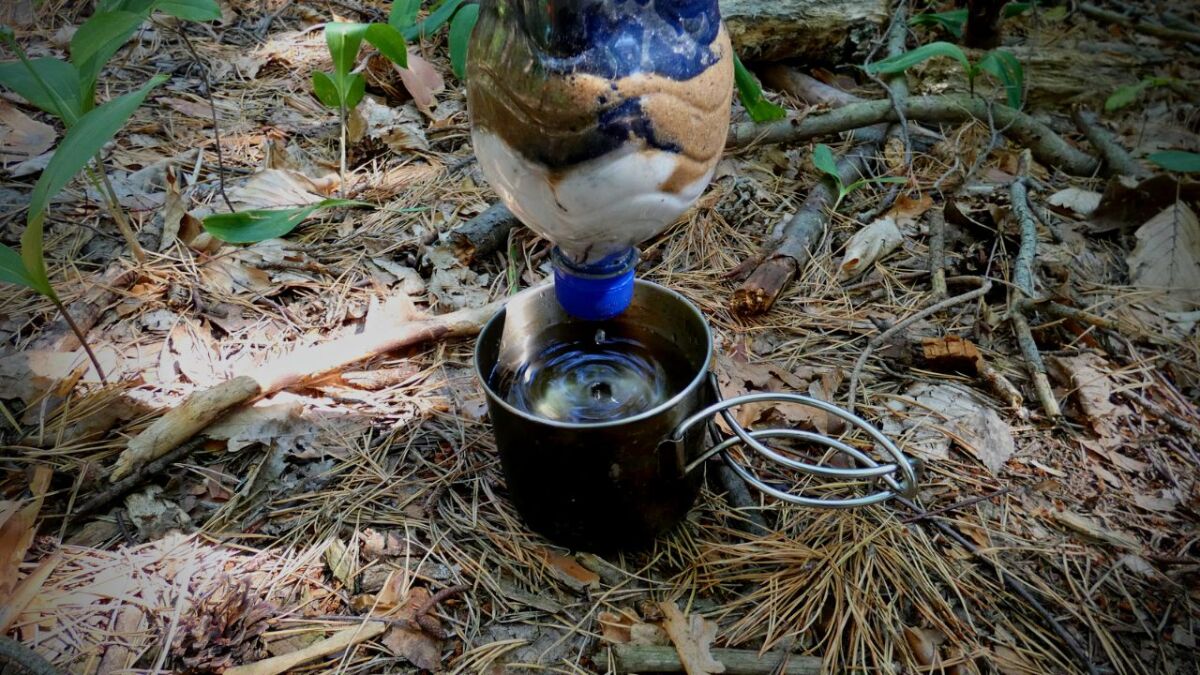
Methods of water treatment
Here are some proven methods that can save you from unpleasant surprises:
- Cooking: The most effective method to sterilize water.
- Filter: Portable water filters can remove bacteria and protozoa.
- Chemical tablets: Chlorine or iodine tablets can help if nothing else is available.
My mantra, which always accompanies me when I venture into the wilderness:
Water gives strength to the wise, but death to the ignorant.
It reminds me that I must not leave my fate to chance.
If you are keen to learn more about water treatment, check out this information: Find, collect, filter and make drinking water drinkable - the ultimate water guide
Nature gives us this precious asset, but it also demands our respect and knowledge to use it safely.
If you prepare well for water treatment, thirst will never become your enemy.
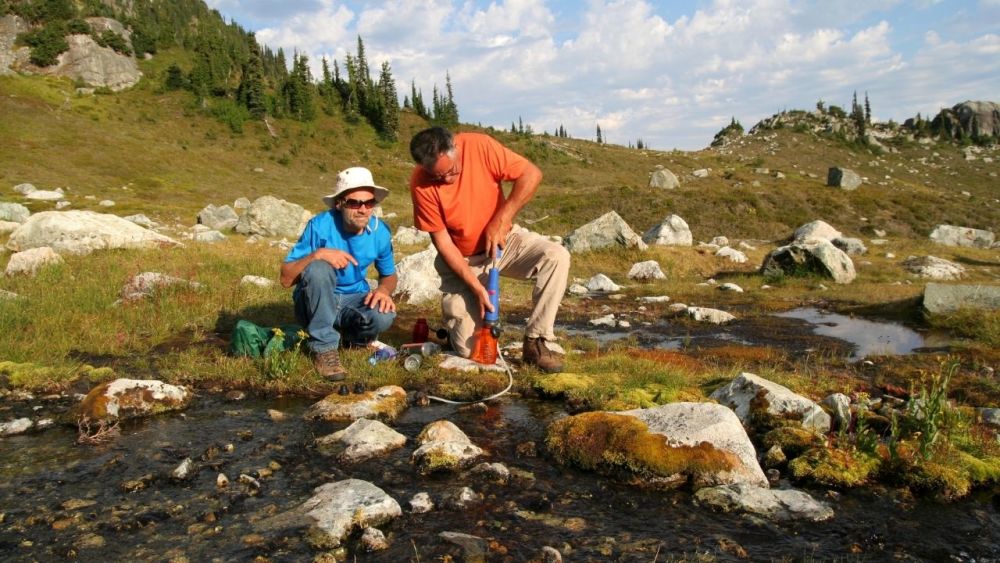
Mistake No. 8: Underestimation of weather conditions
Have you ever felt the power of a sudden thunderstorm in the mountains?
Or have you experienced the paralyzing cold of an unexpected snow front?
The weather is a constant companion in the wilderness and it can quickly change from a soft whisper to a screaming wind.
I experienced firsthand the humility towards the weather when I almost lost my way during a sudden change in weather.
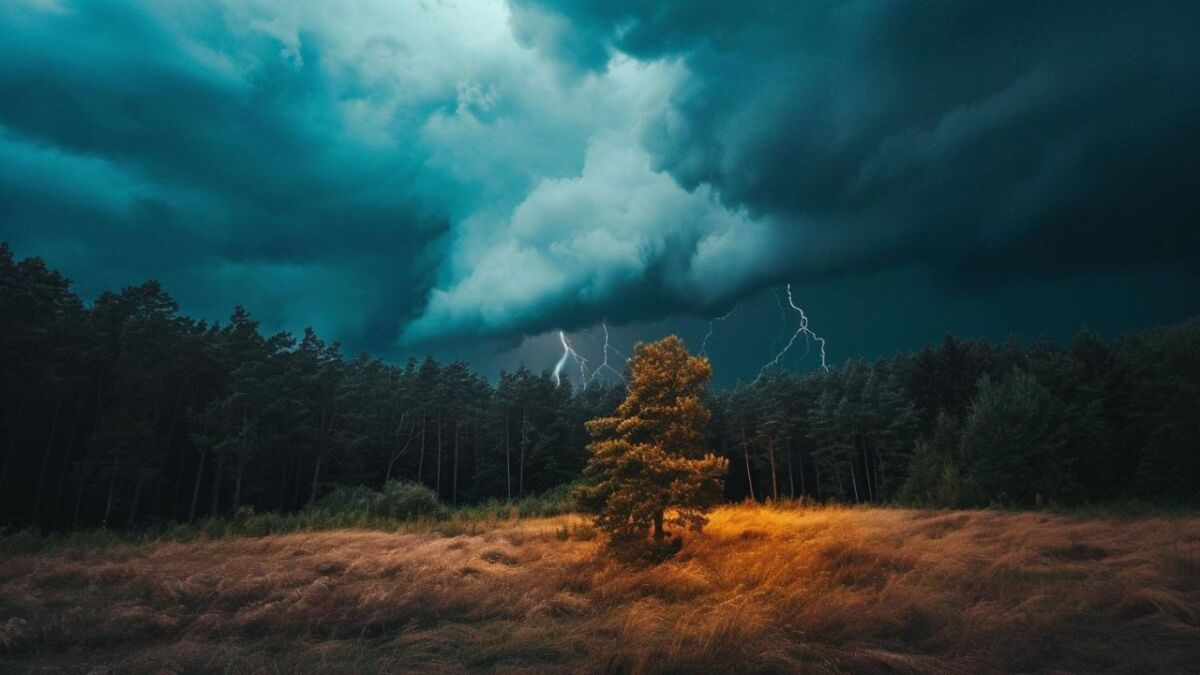
The Weather - A Friend or Foe
It is important to understand the weather conditions, not only before the tour, but also during it.
Changes in the weather can ruin your plans and put your safety at risk.
- Cloud reading: If their shape or speed changes, the weather may change.
- Pay attention to the wind: A freshening wind can be a precursor to a storm.
- Observe the temperature: A sudden drop in temperature is often a bad sign.
Prediction and Preparation
Staying up to date can be challenging when you're in the middle of nature. But there are tools and knowledge you can use:
- Weather Apps: Before your tour, you should check the weather.
- Natural Signs: Learn to interpret the signs of nature that can indicate changes.
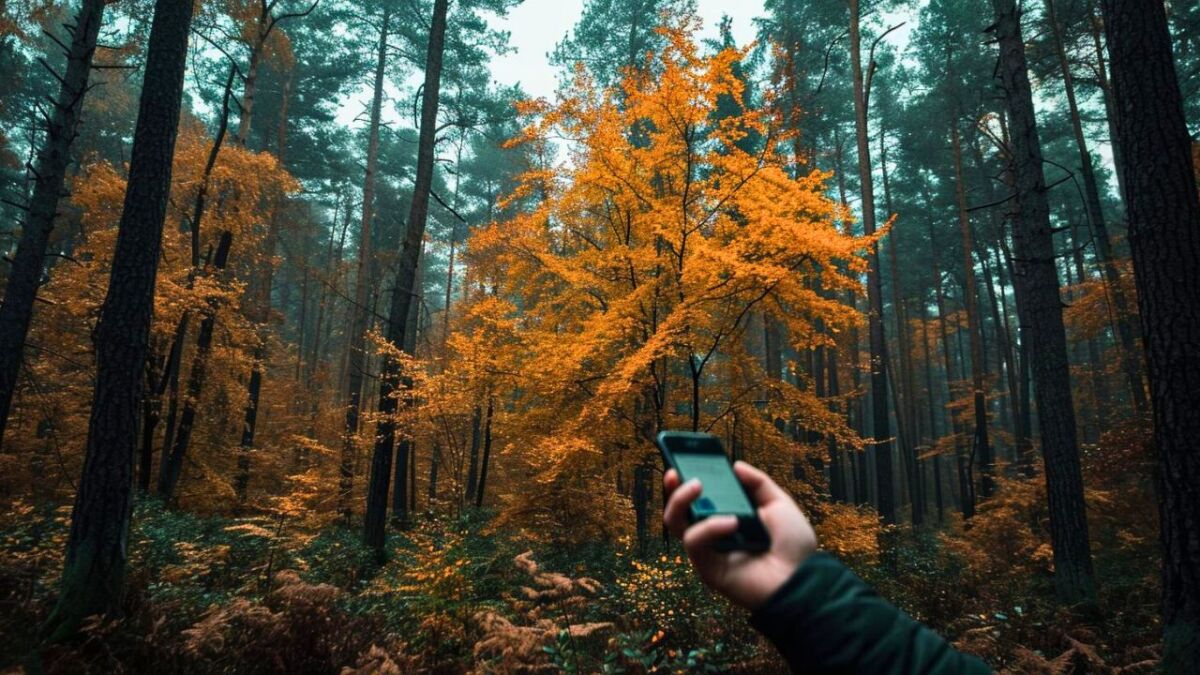
It's best to approach the weather with this mindset:
Nature has no bad moods, but we must learn to read and respect its mood swings.
This is a realization that constantly reminds me to be attentive and proactive when it comes to the weather.
For more in-depth information on dealing with weather phenomena, check out these pages:
Nature and weather demand our respect, and with the right knowledge, you can prepare and protect yourself.
No matter if the sun is shining or the sky is darkening - be prepared and vigilant because the weather plays a crucial role in the wilderness.
Mistake No. 9: Lack of First Aid Knowledge
A friend cut himself deeply on the finger, and there was no help in sight.
Currently, it became clear to me: First aid in the wilderness is not just a chapter in a textbook, but a skill that can determine life or death.
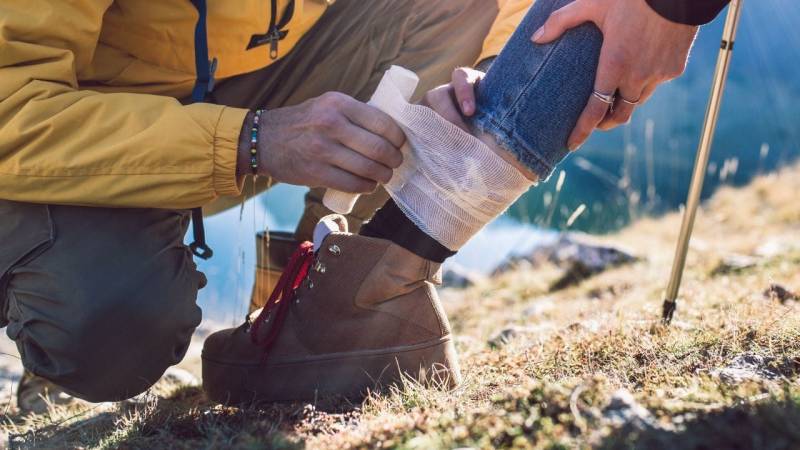
Basic knowledge that matters
In the wilderness, there are no ambulances that you can just call. You need to be able to help yourself and others quickly and effectively.
- Wound Care: Even small wounds can cause serious problems in the wilderness.
- Stabilization: A sprained ankle or a broken arm needs to be stabilized long before help arrives.
- Hypothermia: Early detection and proper treatment of hypothermia can save lives.
Practice makes perfect
Take part in courses and practice regularly to keep your skills fresh.
A situation in which you have to provide first aid will not ask if you are ready.
- Regular Refreshing: Knowledge in first aid is perishable if not maintained.
- Practical Experience: Practice with friends or family. This builds confidence in your abilities.
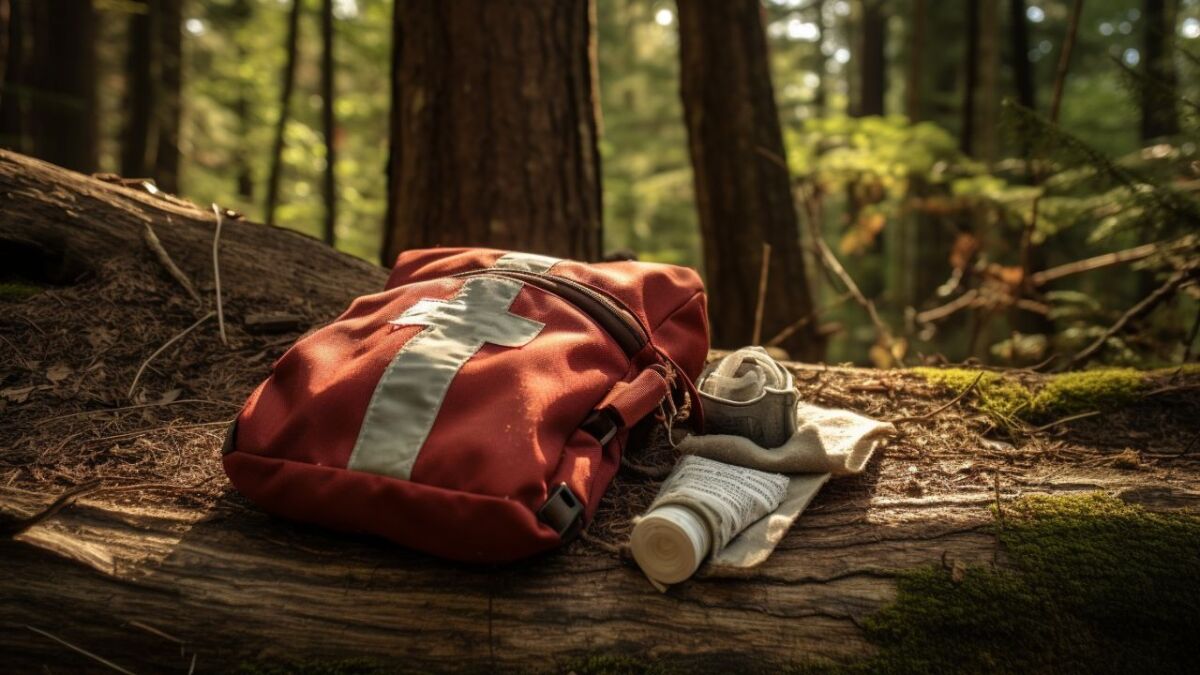
This quote has stuck with me because it sums up what I have learned about first aid:
First aid is a gift you can give to yourself and others.
She is essential and can change everything!
For more information and resources to help deepen your first aid knowledge, visit:
- Bushcraft First Aid Kit: Assembling and Applying
- Outdoor Adventure: The Most Important First Aid Tips Every Camper Should Know
First aid is a pillar of self-reliance in the wilderness - a valuable part of your survival kit that you always carry with you: your knowledge and skills that can make a difference in an emergency.
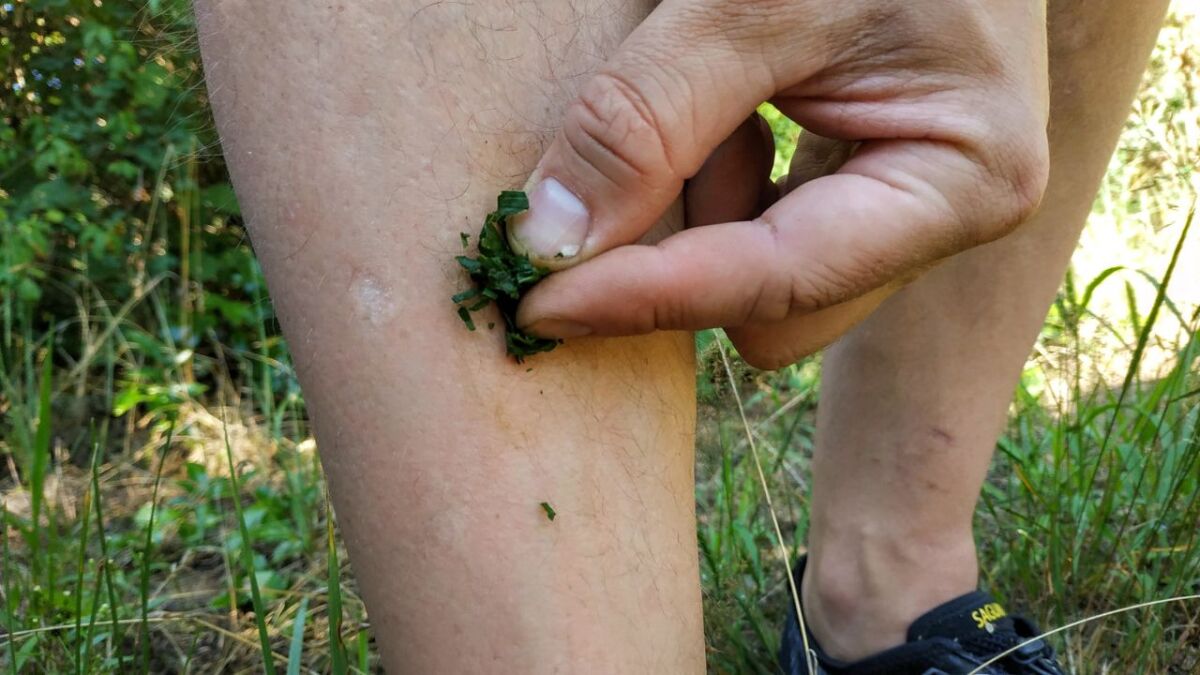
Mistake No. 10: Inappropriate Clothing
It was a frosty morning in the mountains when I understood the importance of wearing the right clothing firsthand.
I had decided to go for a light hike and was only lightly dressed.
A sudden cold snap taught me an unforgettable lesson: Nature doesn't wait for us to dress appropriately.
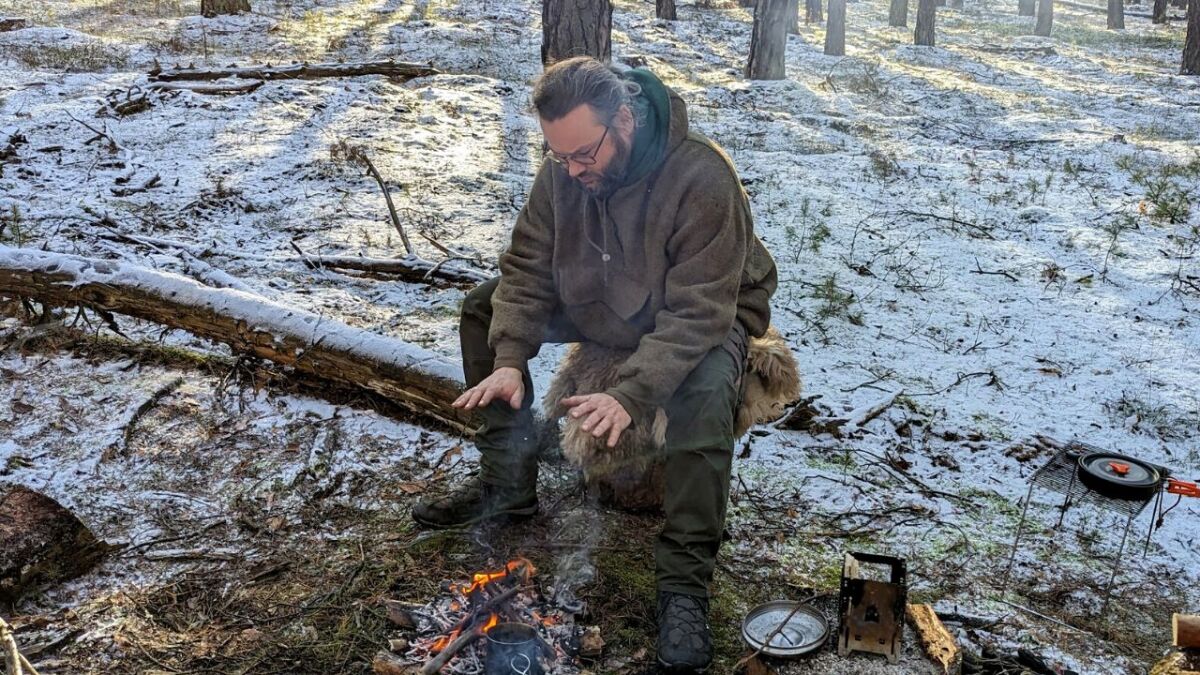
Your clothing needs to think ahead
In the wilderness, you don't wear fashion, you wear functional layers that protect you and keep you mobile.
Your outfit should be intelligent, allowing for adjustments to the weather and regulating moisture.
- Layering system: Wear multiple layers that you can put on and take off as needed.
- Materials: Wool and synthetic fibers retain heat even when wet - unlike cotton.
- Protection: Windproof and waterproof outerwear can make the difference between comfort and disaster.
Adaptability is crucial
If the weather changes, you need to be able to react. The right clothing allows you to make quick adjustments without having to take a break or seek shelter.
- Versatility: Pack clothes that work in multiple scenarios.
- Accessories: Please keep in mind gloves, hat, and good socks. They are often more important than you think.
This advice has accompanied me since that cold morning hour because it reminds me that preparation is the key:
Dress for the weather that could come, not for the one you wish for.
If you would like to learn more about how to optimize your clothing for your outdoor adventure, check out this page:
The right clothing can be more than just a comfort factor - it can save your life.
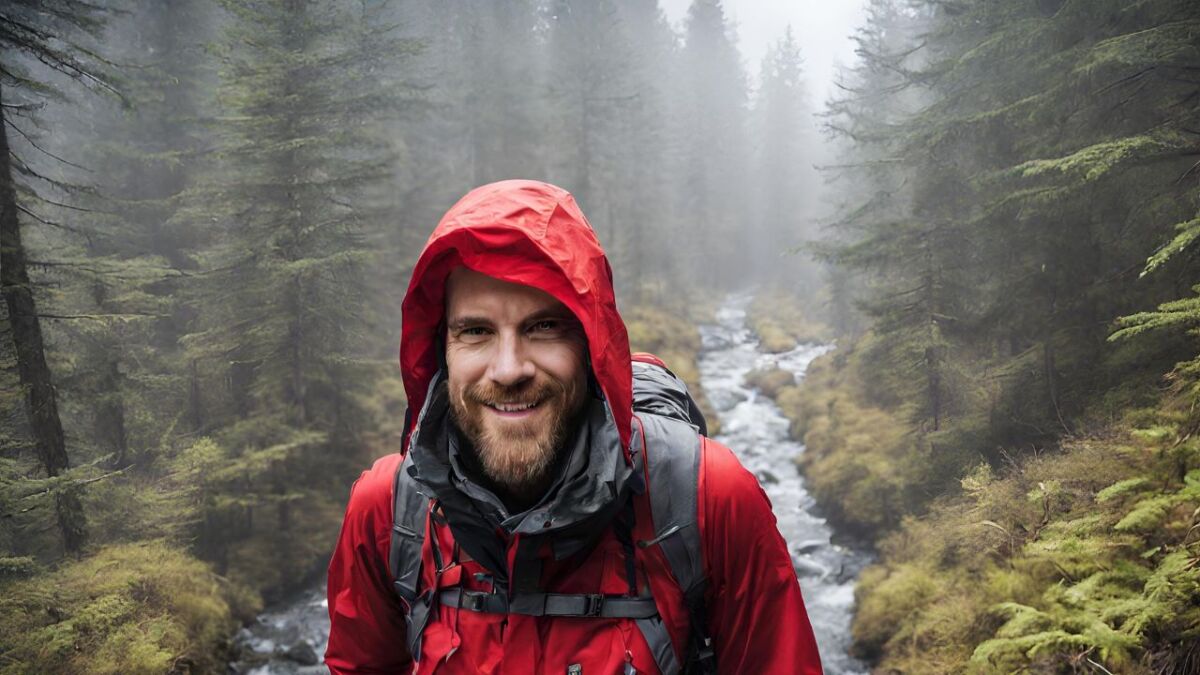
To be in harmony with nature means not only to enjoy it, but also to be prepared for its whims.
With the right clothing, you are prepared for any weather and stay in control - regardless of what the day (or night) brings.
Mistake No. 11: Missing orientation skills
It was under a dense canopy of leaves, surrounded by almost identical-looking trees, when I realized: Without my knowledge of orientation, I would have been lost.
You can't rely on reception to use your GPS - nature doesn't provide any hotspots.
A compass and a map are like good friends: They tell you where to go, but only if you listen carefully.
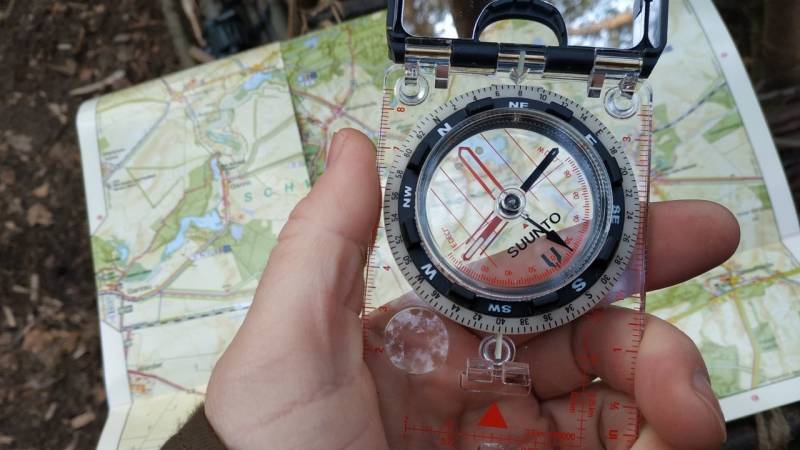
Find instead of Search
A good understanding of how to read a map and use a compass can make the difference between an enjoyable day and an involuntary overnight stay in the outdoors.
- Read Maps: Learn how to interpret contour lines, symbols, and scales.
- Compass Usage: Understand how to determine your direction using a compass.
- Natural Landmarks: Orient yourself using rivers, mountain ridges, or distinctive trees.
Understanding the language of the landscape
The ability to navigate is like reading an unwritten book. The compass is your key and the map is your grammar.
- Practice in the familiar: Start in a familiar environment to get a feel for the instruments.
- Step by step: Remember, the compass only points you in the right direction. The journey must come from you.
Here you will find valuable tips and tricks on how to master the use of map and compass: How to use a compass and a map?
By internalizing and regularly practicing the knowledge of orientation, you will be able to move confidently in nature - independently and freely.
Mistake No. 12: Failure to consider Leave-No-Trace principles
Like a shadow figure, I move through the forest, leaving nothing but footprints and taking nothing but memories. At least, that's what I try to do.
The principle "Leave No Trace" is more than just a guideline for me - it is a code of honor.
It is about incorporating respect for nature into every action and leaving it in a way that subsequent hikers can experience the same untouched beauty.
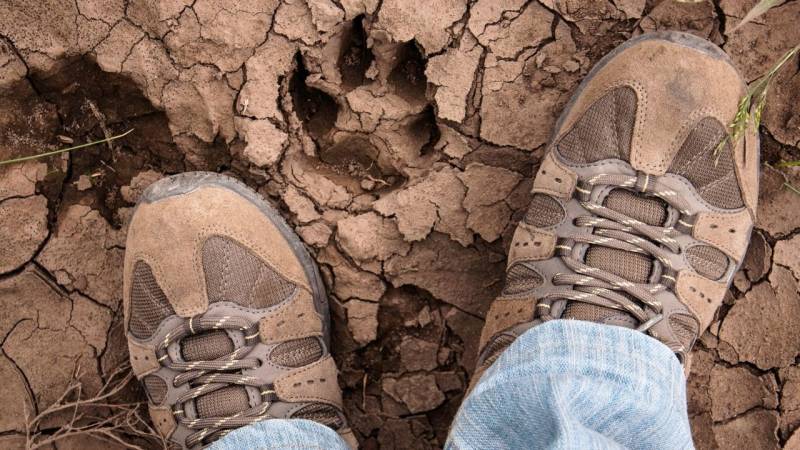
Invisible travel: here's how
- Avoid packaging waste: Everything you bring must also go back with you.
- Conserve natural resources: Use firewood sparingly and do not damage plants.
- Respect wildlife: Do not feed animals and keep your distance to avoid disturbing them.
Act Naturally
Every decision you make, from pitching your tent to lighting your fire, should be guided by a deep respect for the environment.
- Campsite selection: Use existing campsites to avoid new interventions in nature.
- Fire pits: Use existing fire pits or portable bushcraft stoves.
With this thought in mind, I appreciate every action I take in nature and strive to preserve it for future generations:
We are only temporary visitors in the world; therefore our traces should be fleeting.
By practicing the principle of "Leave No Trace", you demonstrate true bushcraft competence and unwavering respect for our natural environment.
You ensure that the wilderness remains wild and wonderful for everyone - a gift that doesn't need a sender.
Read also
The 7 Leave No Trace Principles and their Application: Your Guide to Environmentally Conscious Outdoor Behavior – Discover how the Leave-no-Trace principle can revolutionize your outdoor experience. Protect what you love and read more about this environmental protection.
Conclusion - Your Bushcraft journey has just begun
Now that we have wandered through dense forests, climbed treacherous mountain trails, and rested at hidden springs together, it is time to pause and look back.
Remember: Bushcraft is a journey, not a destination - a path that teaches both discipline and humility.
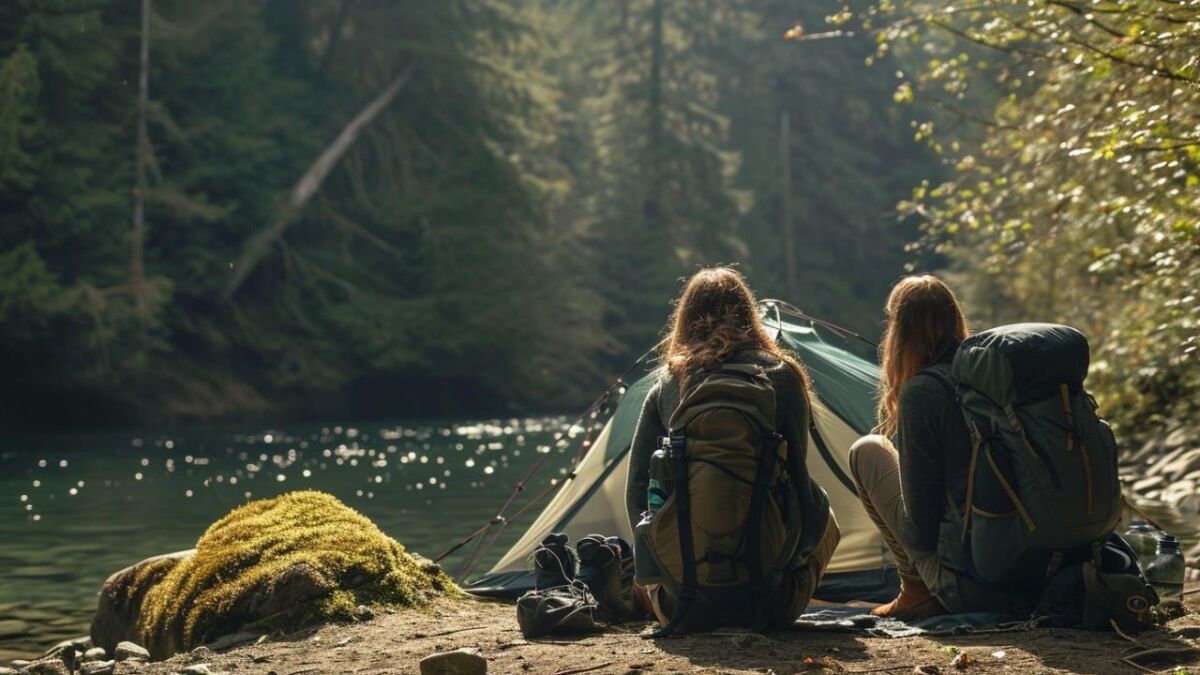
Putting knowledge into practice
You have learned how important it is to prepare, choose the right equipment, know your limits, and treat nature with respect.
Every mistake we have discussed serves as a reminder and learning opportunity for you.
Here are my final tips:
- The heart of the Bushcrafter: Never stop learning and wanting to improve.
- Community and exchange: Share your experiences and learn from others.
- Nature as a teacher: Observe, listen, and feel to understand the language of the wilderness.
This sentence summarizes perfectly my previous experiences in nature:
The greatest lessons await where we least expect them.
It reminds me that every challenge holds the opportunity to grow and become better.
Do you have any personal experiences or tips that you would like to share with the community?
Let us hear your story and utilize the treasure trove of knowledge that we can accumulate together. Comment below and share your perspective with us.


Author of the guide
Martin Gebhardt
Hey, I'm Martin. On my blog, you will learn the basics and numerous details about living in the wild. I think survival, bushcraft and the good life in nature are the keys to happiness. Find me here on Instagram or on YouTube. You can find more about my mission on the About Me page.
Was this guide helpful?
13 people found this guide helpful.
5.00 out of 5 points (13 Ratings)
Comments (0)
This post may contain affiliate links. So if you click on the links and make a purchase, I will receive a small commission at no additional cost to you. Click here, to learn more about it.



